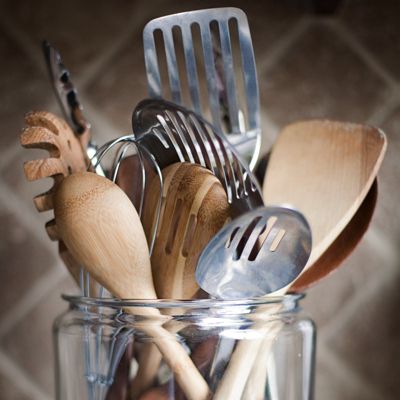Although melons of one sort or another are in the market all year, the best time to buy them is August and September, when there is the widest selection. Currently, there are about 15 kinds of melons available in most parts of the country, reassuring for consumers who may be leery of cantaloupes after the outbreak earlier this summer of salmonella poisoning attributed to tainted melons.
Besides cantaloupes, and beyond the familiar honeydews and watermelons there are casabas, Crenshaws and even some special small French-style melons with names like French morning and French afternoon. Others, like the ogen and galia, are grown in Israel.
It is impossible to generalize about selecting melons because the characteristics that indicate fine quality differ for each variety. With some there should be more green or gold, with others less, for example; some should be smoother and others rougher.
If the melon is rough at the stem end, suggesting that it was cut, not merely lifted off the vine, it is a sure sign it will not be ripe. A sufficiently mature melon does not need to be cut, or as they say in the trade, is "full slip." On the other hand, melons with soft areas should also be avoided. It is also useful to know that the variously white, gold, salmon or green flesh of melons may soften and mellow but does not ripen further once the melon has been picked. And with melons, lush sweetness is all.
How good a melon is depends on the grower and on the produce market. Don Smith, the president of Turlock Fruit Company in Turlock, Calif., said that managers of supermarket chains, especially in the New York and New Jersey area, "demand green honeydews that are like cement so they have more shelf life."
He said his honeydews, one of eight varieties of melon he grows, are picked too ripe for these chains. But melons bearing one of his labels, Sycamore, are especially sought-after by discriminating produce managers for their sweetness.
Compared with smooth-skinned supermarket honeydews, Sycamores look ready for the dermatologist, their skins riddled with thin veins of brown webbing and freckling. But that's an indication of high sugar content. "Cosmetically they are not the most desirable," he said, "and they'd never make it through the gate at the chains." But one must remember that it's the inside of the melon that's eaten.
Other, less common types of melons are also being found more often in markets that carry fine produce. Joseph Doria, an owner of Grace's Marketplace in Manhattan, is excited about some of the experimental new melons being grown in California and now available in limited quantities.
"They're very sweet and they're small, so one or two people can eat them in a single sitting," he said.
Lynn Bagley, the executive director of the Marin County, Old Oakland, Vallejo and Novato Farmers' Markets in the San Francisco Bay Area, said there are more than ever this year. It seems that growers are always coming up with new ones, or new versions of old ones.
She mentioned the large crane melon, which is grown only in Sonoma County and has green and yellow speckled skin and orange flesh, and the ambrosia, which is like an extra-juicy cantaloupe. She said there is a huge variety called Kharboozah with crunchy white flesh that originated in northern Iran.
As a matter of fact, except for watermelons, which came from Africa, melons originated in the region of ancient Persia. They probably grew in the gardens of Babylon and are mentioned in the Bible. The name cantaloupe comes from the Papal domain of Cantalupo, near Tivoli on the outskirts of Rome, where melon seeds brought from Armenia were planted in the 14th century.
Melons are members of the same family, the Cucurbitaceae, as the winter squashes, which are essentially their New World counterparts. Squashes existed in abundance in the Americas but melons were brought by European settlers. The winter melon used in Chinese cooking is not a melon but a type of squash.
This weekend, for the third year in a row, the Old Oakland Farmers' Market is holding a melon tasting to introduce consumers to many of these varieties.
"The tasting is a way to get people to try the unfamiliar melons without them having to buy a whole melon," Ms. Bagley said.
"Consumers won't find any of these melons in the supermarkets until they become more popular. But people are interested in trying them because they get bored with the same old cantaloupes, honeydews and watermelons."
That is, if they can find a good one. Telling a Crenshaw From a Santa Claus
CANTALOUPE, the most popular melon grown in America, is round, fairly small, with dense, nut-sweet orange flesh and skin covered with a tight web of netting.
When ripe, the skin under the netting should be a sandy gold color, not green or bright orange. The Hand brand, grown in limited quantities in the Hudson Valley, are particularly fine cantaloupes.
In light of the outbreak of salmonella poisoning earlier this summer attributed to tainted cantaloupes, the Federal Government recommends that consumers wash melons thoroughly, cut them with clean knives, keep them refrigerated as long as possible before serving and leave them at room temperature for no more than four hours. Melon that is bought pre-cut is likely to pose more of a risk than whole melons.
CASABA, a rounded oval melon usually about a foot long, has ridged, pale yellow skin and creamy white, moderately sweet flesh. There should be no green in the skin.
CRENSHAW, sometimes known as Cranshaw, is a large melon -- up to 10 pounds -- with a flattened oval shape, a relatively small seed cavity and thick, dense, pale orange, extremely succulent flesh. The yellow to greenish skin has shallow ridges. When ripe, the skin should yield slightly to the touch.
FRENCH AFTERNOON is similar to the Charentais (also called Cavaillon), the most popular melon in France. It is the size of a large grapefruit, with smooth, greenish skin sectioned in darker stripes and very sweet orange flesh.
FRENCH MORNING looks like the French afternoon but has refreshing green flesh that is less sweet than the French afternoon.
GALIA melons were developed in Israel and named for the grower's daughter. Israel is still the source of the best ones, although some are now grown in Central America. The galia looks like a cantaloupe, but somewhat yellower under the netting, and the flesh is greenish, like a honeydew.
HONEYDEW, the third most common variety in this country after cantaloupe and watermelon, has pastel green flesh that, at its best, is delectably sweet.
The skin should be creamy white with a matte, almost velvety, finish, not shiny or greenish. Yellowing is an indication of overripeness. A fine network of brown veins or freckles on the skin indicates high sugar content. Honeydews bearing labels from Turlock, Calif., are usually of excellent quality.
JUAN CANARY is a bright yellow football-shaped melon with mellow, fairly firm white flesh. Some rough veining at the ends means sweetness.
MUSKMELON is a larger, juicier, often sweeter and highly perfumed version of the cantaloupe that is grown in the Northeast this time of year. These melons have segmented skins and are larger and usually paler than cantaloupes, with a coarser pattern of netting.
OGEN, or ha-ogen, is small and has smooth green skin with stripes that divide it in sections and delicate green flesh. It is grown in Israel but is said to have first been developed in Hungary.
ORANGE FLESH HONEYDEW is an old-fashioned melon coming back into favor. Buyers should seach for the same characteristics as for regular honeydews, except that there is an orange blush to the skin when ripe. The flesh is rich and sweet.
PERSIAN melons are similar to cantaloupes but very large, usually weighing at least five pounds. It is difficult to find one that has ripened evenly. There should be as little dark green as possible under the netting on the skin.
SANTA CLAUS is an oval greenish-fleshed melon about a foot long with slightly crisp, mildly sweet flesh. The skin is streaked yellow and green. The melon is riper when there is more green. It is a late-season melon; hence the name.
SATICOY is similar to a cantaloupe but is oval, not round, has coarse netting like a muskmelon and has an extremely lush flavor.
SHARLYN, also cantaloupe size, is a rounded oval with netted skin, similar to a Persian melon but with sweet white, not orange, flesh. The skin should be yellow under the netting.
WATERMELONS now come in several varieties, including small, round Sugar Babies; seedless, and yellow fleshed.
Small watermelons, often called ICEBOX MELONS because they may be conveniently stored, tend to have properly crisp flesh and fewer seeds, but the advantage to buying a cut piece of watermelon is that the flesh is visible. It should be deep red and look smooth, not broken or grainy.





















